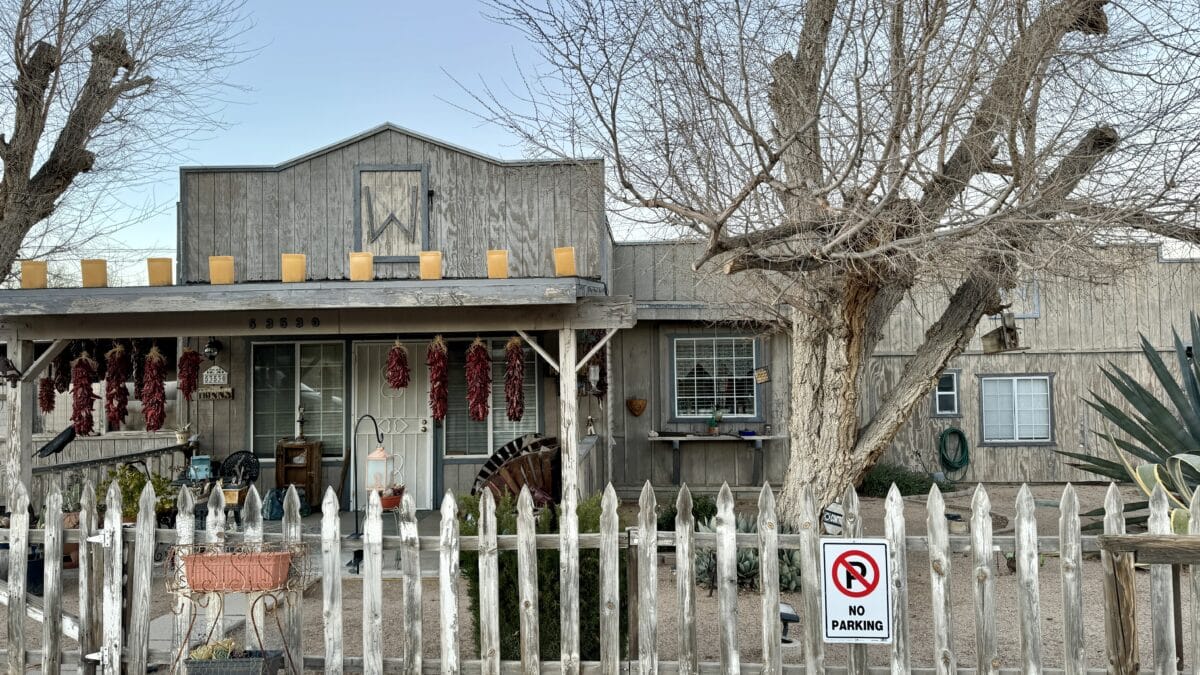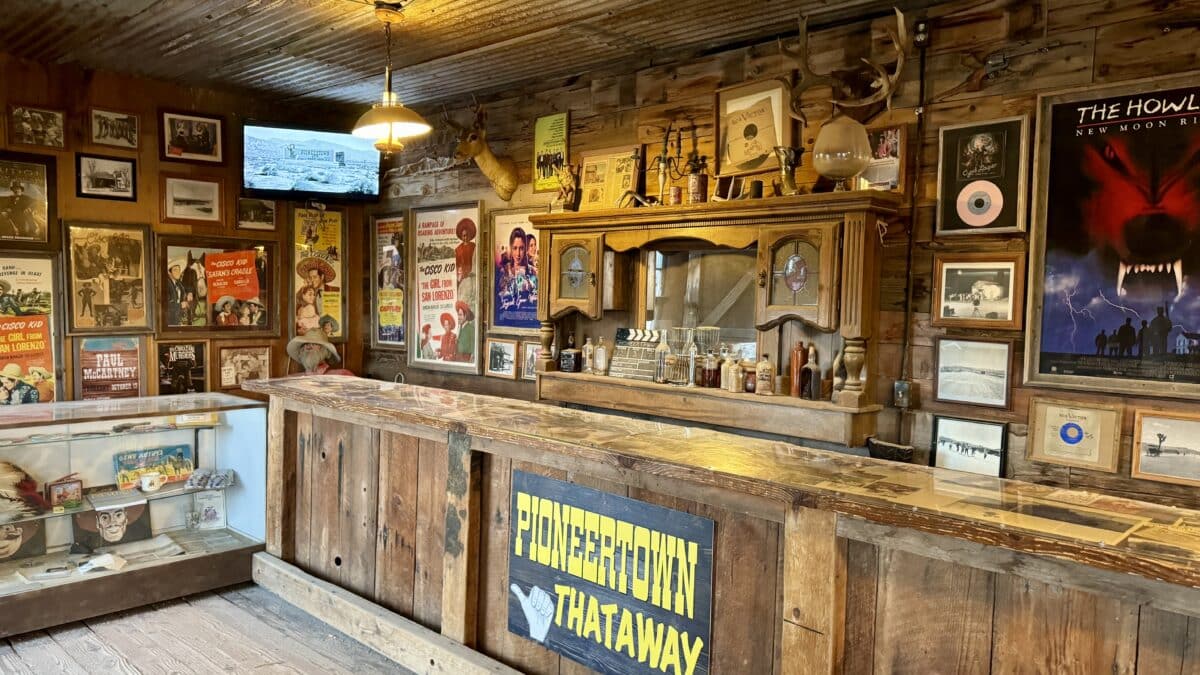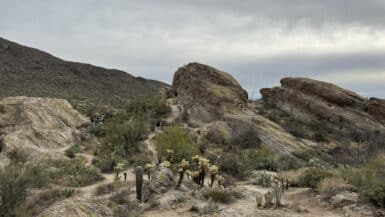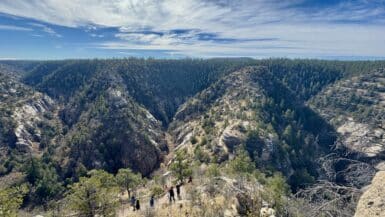Introduction to 3 Day Itinerary Joshua Tree
Planning a family getaway for 3 days in Joshua Tree? This itinerary is your perfect guide to making the most out of your 2 nights in Joshua Tree, ensuring a memorable time for both adults and kids alike. From exploring the rugged beauty of the desert to engaging in family-friendly hikes, your time in Joshua Tree with kids is bound to be an unforgettable experience. Before we get started with our 3 day itinerary Joshua Tree that is perfect for a weekend getaway from Los Angeles, here’s some facts and history on this national park.
Quick Facts About Joshua Tree
- Location: Joshua Tree National Park is located in southeastern California, in the United States.
- Established: It was designated as a U.S. National Monument in 1936 and later reclassified as a National Park in 1994.
- Size: The park covers an area of approximately 790,636 acres (1,235 square miles).
- Unique Flora: The park is named after the Joshua Tree (Yucca brevifolia), which is native to the park’s Mojave Desert environment.
- Diverse Ecosystems: The park spans two distinct desert ecosystems, the Mojave and the Colorado Deserts.
- Geology: Known for its fascinating geologic features, including rugged rock formations and stark desert landscapes.
- Wildlife: Home to a variety of wildlife, such as desert tortoises, bighorn sheep, and numerous bird species.
- Recreation: Popular for hiking, rock climbing, camping, and stargazing, due to its clear, dark skies.
- Visitor Centers: The park has several visitor centers, including Joshua Tree Visitor Center, Oasis Visitor Center, Cottonwood Visitor Center, and Black Rock Nature Center.
- Climate: Characterized by hot summers and cool winters, with significant temperature variations between day and night.

Brief History on Joshua Tree
Joshua Tree National Park, a unique and mesmerizing landscape in southeastern California, has a rich and diverse history. Named after the Joshua Trees (Yucca brevifolia), which are native to the park, its history spans thousands of years, involving numerous cultures, explorers, and natural phenomena.
Early Inhabitants:
The earliest known inhabitants of the area were the Pinto people, dating back to 8000-4000 BCE. They were hunter-gatherers who left behind stone tools and pottery shards. Following them, various Native American groups, including the Serrano, the Chemehuevi, and the Cahuilla, inhabited the region. These groups utilized the land for hunting, gathering, and trading.
European Exploration and Settlement:
The late 1800s brought European explorers and settlers. Cattle ranching, mining, and homesteading became prevalent. Miners extracted gold and silver, while others tapped into cattle ranching, taking advantage of the land’s sparse resources. The area also witnessed homesteaders who tried to cultivate the land, though with limited success due to the harsh desert conditions.
Conservation Efforts:
The unique landscape of Joshua Tree captured the attention of conservationists. Minerva Hoyt, a prominent preservationist, played a crucial role in advocating for the area. Her efforts led to the establishment of Joshua Tree National Monument in 1936 under President Franklin D. Roosevelt. This protected a significant portion of the Joshua Tree habitat.
National Park Designation:
The area was initially designated as a national monument. However, in 1994, the California Desert Protection Act signed by President Bill Clinton reclassified Joshua Tree as a national park. This change not only expanded its size but also enhanced its protection status.
Cultural and Natural Significance:
Joshua Tree National Park is renowned for its rugged rock formations, stark desert landscapes, and the distinctive Joshua Trees. It’s a popular destination for rock climbers, hikers, stargazers, and nature lovers. The park is also home to a variety of wildlife and serves as a critical habitat for desert flora and fauna.
Throughout its history, Joshua Tree National Park has been a place of wonder and inspiration. Its transformation from native land to a national park highlights the importance of preserving natural and cultural resources for future generations. Today, it stands as a testament to the beauty and resilience of the American desert landscape.

When’s the best time to visit Joshua Tree with Kids?
Best Time to Visit with 3 Days in Joshua Tree:
The best time to visit Joshua Tree National Park largely depends on what you want to do:
- Spring (March to May): This is arguably the best time to visit. The weather is mild, making it ideal for hiking and rock climbing. Spring also brings the bloom of wildflowers, including the Joshua trees and cacti.
- Fall (September to November): Similar to spring, fall offers pleasant temperatures and fewer crowds. It’s a great time for outdoor activities and enjoying the park’s natural beauty.
- Winter (December to February): If you prefer cooler temperatures and quieter trails, winter is a good time. However, be prepared for cold nights.
- Summer (June to August): While it’s the least ideal time due to extreme heat, early morning and late evening visits can still be enjoyable. It’s less crowded, and the night skies are spectacular for stargazing.
Average Temperatures in Joshua Tree:
- Spring (March to May): Temperatures range from the high 70s to 85°F (25-29°C) during the day and cooler at night.
- Fall (September to November): Daytime temperatures range from the high 80s to the low 70s°F (30-22°C), with cooler nights.
- Winter (December to February): Daytimes are cooler, typically around 60°F (15°C), with nighttime temperatures dropping to near or below freezing.
- Summer (June to August): Daytime temperatures can soar above 100°F (38°C), while nighttime temperatures drop to around 70-80°F (21-27°C).
The average temperature in Joshua Tree National Park can vary significantly depending on the time of year due to its desert location. Always remember to check the weather forecast before your trip and prepare accordingly, as desert conditions can change rapidly.
Planning Your 2 Nights in Joshua Tree
We recently used this itinerary to visit Joshua Tree in early January. The temperatures were in the low 50s°F in the day and 30s°F at night. We booked an Airbnb that was perfect for our family, although it was a big surprise to learn that most of the roads north of 29 Palms Highway Route 62 are not paved. This was no problem for our truck but be mindful of your vehicle clearance and tires before heading out.
Arrival Day: Stepping into the Wild West
Joshua Tree is about 2 hours east of the major regional Ontario airport off Interstate 10. You can also look into flying into Palm Springs although flights are limited. The roads are not lit at all which helps with stargazing but makes arrival late at night difficult. Many vacation rental homes are literally “off the beaten path” out here. For this first day we’ll reserve it for travel and arriving to your accommodations safely to enjoy a nice dinner and restful sleep.
If you happen to get in before sunset, head over to the iconic Pioneertown. This unique spot offers a taste of the Old West and is an exciting introduction to the area for the whole family. Wander around the old movie sets, enjoy the rustic charm, and maybe even catch a live music performance at the Red Dog bar.
Joshua Tree is known as one of the best places for stargazing. Over the 2 nights in Joshua Tree, find time to look up and enjoy the stars.

Day 2: Western Side of the Park
Morning:
The sunrises are equally stunning so during your 3 days in Joshua Tree, find a moment to catch a glimpse.

- Joshua Tree Visitor Center: Kickstart your day at the Joshua Tree Visitor Center. It’s a goldmine for grabbing maps and getting insider tips from rangers – invaluable for navigating the park with kids. Like we always say don’t forget the Junior Ranger booklets for the kids to keep them entertained and earn the Joshua Tree Junior Ranger badges.
- Black Rock Canyon Hike: Next, embark on a family-friendly 3.8 mile out and back hike at Black Rock Canyon. It’s a fantastic way to immerse in the park’s natural beauty. The trail is an average 2-3% grade that is well maintained, easy to find, and hard to get lost on. Download all your maps the night before so you have them as there is no cell service in the park.
- Barker Dam Trail: Explore Barker Dam, a short hike about 1.2 miles that’s perfect for families. It offers opportunities to spot wildlife and discover historic sites such as the dam itself and petroglyphs left by the Native Americans.

Afternoon:
- Picnic in Hidden Valley: Enjoy a leisurely lunch in the scenic picnic areas of Hidden Valley. It’s a great spot to relax and refuel.
- Hidden Valley Exploration: After lunch, take an easy hike through Hidden Valley, famous for its fascinating rock formations or just “scramble” on the rocks and explore the fascinating boulders.

- Ryan Mountain Trailhead: If your family is up for it, hike the Ryan Mountain trailhead. It’s a bit more challenging but rewards you with stunning views.
Day 3: Eastern Side of the Park
Morning:
- 29 Palms Entrance Visitor Center: Visit the Joshua Tree Visitor Center at the 29 Palms entrance for more insights and exploration tips (if you didn’t visit the other visitor centers).
- Oasis of Mara: The story behind the Oasis of Mara is that the native people were told if they go out to the desert and inhabit the first place they find with water, they will give birth to boys. In return for each boy that is born, the father must plant a palm tree. In the first year, 29 boys were born thus the name 29 palms.

Afternoon:
- Arch Rock Adventure: Head to the Arch Rock near White Tank Campground, a short hike leading to an incredible photo opportunity. There are a few trails in the area that lead you to Heart Rock and other opportunities for the kids to go scrambling.



- Cholla Cactus Garden: Explore the unique landscape of the Cholla Cactus Garden, especially beautiful around sunset which is about 10 minutes from Arch Rock.

- Skull Rock Discovery: Visit Skull Rock, an intriguing natural formation near Jumbo Rocks that fascinates kids and adults alike.

- Geology Tour Road: Time permitting, drive down the Geology Tour Road for a scenic and educational end to your trip.
Essential Tips for a Family-Friendly Adventure
- Hydration is Key: The desert climate demands constant hydration. Carrying ample water is non-negotiable, especially for the little ones. There are no places to fill up water inside the park.
- Sun Protection: The sun in Joshua Tree can be intense. Sunscreen, hats, and appropriate clothing are vital for a comfortable experience.
- Appropriate Attire: The desert’s extreme conditions, with hot days and cool nights, require checking the weather forecast and dressing accordingly.
- Rock Climbing Opportunities: For families inclined towards rock climbing, Joshua Tree offers numerous routes suitable for various skill levels.
- Advance Bookings: Campsites in Joshua Tree are in high demand, particularly on weekends. Booking in advance is highly recommended to secure your spot.
- No Cell Service: There is absolutely no cell coverage, prepare your maps ahead of time!
Your 3 days in Joshua Tree, filled with exploration, adventure, and unforgettable family moments, will leave you with cherished memories. From the majestic sunrises to the awe-inspiring landscapes, Joshua Tree is a magical place to connect with nature and each other. Enjoy your journey in this stunning desert wonderland! Leave us comments below or shoot me an email if you have questions.

FAQ: Family-Friendly Trip to Joshua Tree National Park
Q1: What is the best time of year to visit Joshua Tree with family?
- A1: The best times for a family visit are during the spring (March to May) and fall (September to November) when temperatures are more moderate, making outdoor activities more comfortable.
Q2: Are there activities suitable for children in Joshua Tree?
- A2: Absolutely! Joshua Tree offers several family-friendly activities such as easy hiking trails, nature walks, rock scrambling, and educational programs at the visitor centers.
Q3: What should we pack for our trip?
- A3: Essential items include plenty of water, sunscreen, hats, comfortable hiking shoes, snacks, and layers of clothing. Don’t forget a first-aid kit and a camera to capture the memories!
Q4: Can we camp in Joshua Tree with kids?
- A4: Yes, Joshua Tree is a great place for camping with family. There are several campgrounds within the park. Book in advance, especially if you’re visiting during peak seasons.
Q5: Are there any guided tours suitable for families?
- A5: Yes, there are guided tours that cater to families. These tours can be educational and tailored to a family’s interest, like nature walks focusing on flora and fauna or geological features.
Q6: How do we stay safe while exploring the park?
- A6: Always stay on designated trails, carry plenty of water, use sun protection, and be aware of the wildlife. Also, always check weather conditions before heading out.
Q7: What wildlife might we see in Joshua Tree?
- A7: You might see various desert animals like roadrunners, lizards, bighorn sheep, and possibly desert tortoises. Remember to observe from a distance and not disturb the wildlife.
Q8: Are there any educational activities for kids?
- A8: Yes, the park offers Junior Ranger programs which are educational and fun for children. They can learn about the park’s natural environment and cultural history.
Q9: Is there cell phone service in the park?
- A9: Cell phone service is limited in Joshua Tree National Park. It’s best to prepare for minimal service and have a plan in case you need to communicate or navigate without it.
Q10: How long should we plan our visit?
- A10: A visit of 2 to 3 days is ideal to explore the main highlights of the park without rushing, especially with kids. This allows time for leisurely hikes, sightseeing, and relaxation.
Remember, each family’s experience can be unique, so tailor your trip to suit your family’s interests and abilities, and enjoy the natural beauty and adventure that Joshua Tree National Park has to offer!









Leave a reply